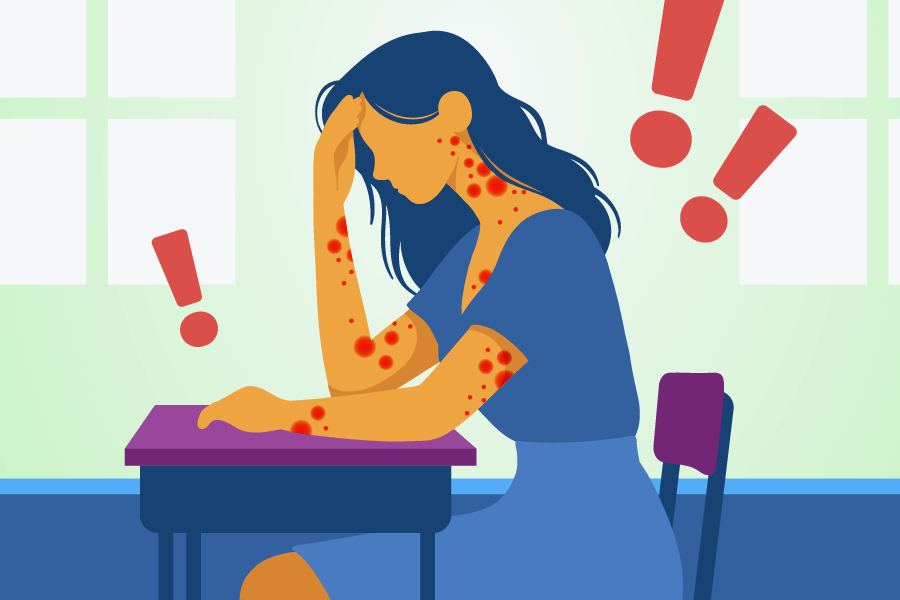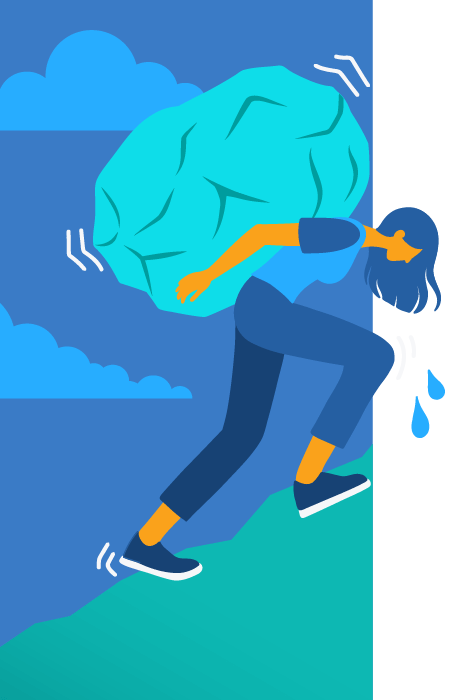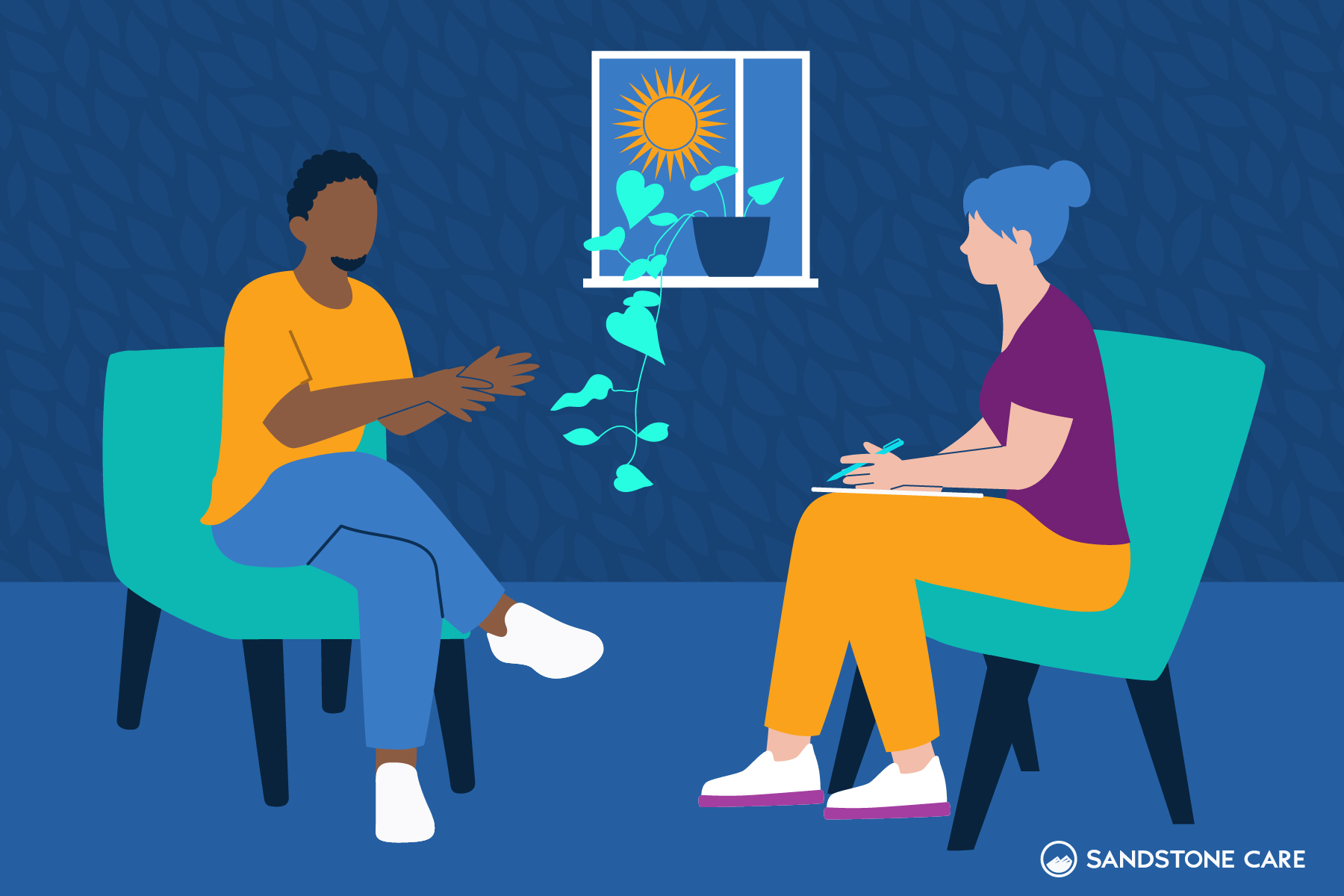Stress Rashes
What Is a Stress Rash?
A stress rash is a skin reaction caused by your body’s response to emotional or physical stress, often appearing as red, itchy welts or hives. It happens because stress triggers the release of hormones like cortisol and adrenaline.
These hormones are the brain’s way to prepare your body to handle immediate threats.
Unfortunately, these hormones also weaken your immune system by temporarily shutting down processes like skin repair and inflammation control.
The brain slows down these “less-essential” processes so that your body can focus all of its energy on surviving whatever is making you feel so stressed out.
With a weakened immune system, however, your skin is left sensitive and unprotected against irritation.
For example, if you’re running late for an important presentation and feeling anxious, your brain tells your adrenal glands to release stress hormones.
From an evolutionary perspective, this response would have helped your ancestors focus on escaping danger, like running from predators.
The immune system slows down during these moments because healing a cut or fighting an infection isn’t as urgent as getting up and away from say, a saber-toothed tiger.
In your case, though, the presentation isn’t putting you in any physical danger, so the brain’s response can actually make you more vulnerable and uncomfortable through things like stress rashes.
How Does Stress Affect the Skin?
The skin is the body’s largest organ, and stress can lead to inflammation, contribute to acne, and cause excessive sweating, which can lead to stress rashes.
What is happening inside your brain and body can affect what happens on the outside.
This is sometimes referred to as the mind-body connection.
While it may not seem like that deadline at work should have anything to do with skin rashes, or that fight with your partner should have anything to do with stress hives, being under too much pressure can cause your skin to break out.
Stress can negatively affect a person’s skin conditions, which is one of the reasons it is so important to learn healthy ways that work for you in managing stress.
What Does Stress Rash Look Like?
Stress rashes typically look like hives, which are raised, red, itchy bumps on the body.
These bumps may range from tiny dots to large welts that form in clusters of blisters.
However, if you think you may have a stress-induced skin condition, it is best to get medical advice to help rule out any other types of rash that you might be experiencing.
Some people who experience chronic stress may begin to experience chronic hives, but it is important to rule out other possible causes with dermatologists.
How Do Stress Rashes Start?
Excessive sweating from stress and the release of cortisol in the brain can be the start of a stress rash.
When you’re stressed, your body goes into “fight-or-flight” mode, releasing hormones like cortisol and adrenaline.
These hormones can weaken your immune system and make your skin more sensitive, which can lead to inflammation.
For example, if you’re cramming for a big test and feeling overwhelmed, your brain tells your adrenal glands to release cortisol.
This hormone speeds up your heart rate and directs blood to your muscles to help you respond to stress.
At the same time, it weakens your immune system, making your skin less able to protect itself from things like heat rash, contact dermatitis, and itchy skin.
Where Are Stress Rashes Most Common?
Stress rashes can happen anywhere, but they’re most common on the face, neck, arms, and chest because these areas have more sweat glands, thin skin, and nerve endings.
When you’re stressed, your body increases blood flow and sweat production, especially in these areas.
They’re also packed with mast cells—special cells that release histamine, causing redness, itching, and swelling.
Where Are Stress Rashes Located?
Stress rash can be located anywhere on the body, including:
- Face
- Hands
- Neck
- Chest
- Stomach
- Inner Elbow
- Legs
- Back
You may also notice that your skin is more irritated if you are wearing tight-fitting clothes. You may find some relief from stress rash by changing into softer, looser clothing.
Is a Stress Rash Serious?
A stress rash itself isn’t typically dangerous, but it’s more than just an annoying skin reaction—it’s a physical warning sign that your body is overwhelmed.
These rashes, often red, itchy, and uncomfortable, may fade with time, but the stress causing them can lead to far more serious issues if not addressed.
Chronic stress weakens your immune system, making you more vulnerable to infections.
It also slows healing, disrupts sleep, and increases the risk of conditions like high blood pressure, heart disease, anxiety, and depression.
If you’re frequently experiencing stress rashes, it’s essential to get to the root of the problem.
Your body is telling you it’s struggling to keep up with the demands being placed on it.
Ignoring signs that you are overwhelmed doesn’t just put your skin at risk.
It can also lead to long-term health complications, relationship problems, and increased risk of unhealthy coping mechanisms like addiction.

Is this blog hitting close to home?
We’re here to help.
Stress Rash Symptoms
How Do You Identify and Treat Stress Rash?
A stress rash is identified by red, raised, itchy welts or hives, often on the face, neck, chest, or arms. To treat it, start by cooling the skin with a cool compress or shower to reduce inflammation.
You can also use antihistamines like Benadryl or Claritin to relieve itching.
In some cases, these rashes may also burn or sting. These areas can be small or large and be warm to the touch.
Skin care treatment for stress rash typically involves these antihistamines, cold compresses, or steroids, but it is important to address the root cause of stress in your daily life to prevent it from happening long term.
How Long Does a Stress Rash Usually Last?
Some people may have stress rashes for a few hours or days, while others may have them for weeks or months.
Stress rashes that last longer than 6 weeks are often considered a condition called chronic urticaria.
Resolving the source of the stress can significantly shorten how long a rash lasts.
By reducing stress through techniques like mindfulness, exercise, therapy, or lifestyle adjustments, you not only help the rash fade faster but also prevent it from recurring.
What Are the Signs of Anxiety Rash?
Signs of anxiety rash can include:
- Itchy, burning, or stinging sensation on the skin
- Red or blotchy hives
- Swollen skin in certain areas of the body
- Appearance of a rash during high levels of stress or anxiety
How Do You Know If Your Rash Is From Stress?
If your rash has red bumps or raised, itchy welts that appear during or shortly after a difficult event, it’s likely caused by stress.
To confirm the rash is stress-related, consider these factors:
- Timing: Did the rash appear during or after a period of high stress, like an important deadline or emotional conflict?
- Pattern: Does the rash seem to flare up when you’re stressed and fade when you’re relaxed?
- Triggers: Have you ruled out other common causes, such as allergens, insect bites, irritants, or infections?
If the timing and triggers point to stress, managing stress through relaxation techniques, exercise, or therapy can help resolve the rash.
However, if the rash does not clear up, spreads, or becomes more severe, consult a healthcare provider to confirm the cause and discuss treatment options.
What Does an Anxiety Rash Feel Like?
An anxiety rash can feel like an itching, burning, or tingling sensation.
When a person is experiencing a rash caused by anxiety, they may feel an uncontrollable urge to itch at their skin, causing a great deal of discomfort.
Having an anxiety rash can feel extremely frustrating as well.
When a person has anxiety, they are already experiencing feelings and thoughts of worry or fear.
As they develop a rash, this new problem can add more to their plate and also contribute to feelings of low self-esteem and overall frustration.
Does a Stress Rash Spread?
A stress rash may start in a small area of the body and spread to more and more parts of the body if the source of stress is not resolved.
Since the skin is more sensitive when under stress, the more a person itches and aggravates the skin, the more a stress rash can spread.
Finding relief and treatment early can help soothe itchiness, which may also help prevent the spread of the rash.
Causes of Stress Rashes
Can Stress and Anxiety Cause a Rash?
Yes, stress and anxiety can lead to a type of rash.
When stressed or anxious, people may sweat more, release more stress hormones, or experience chemical imbalances in the brain or body.
These factors can trigger stress rashes and also worsen existing skin conditions like eczema, psoriasis, or rosacea.
People with anxiety or high-stress levels may engage in certain habits or behaviors when experiencing difficult feelings, such as itching, scratching, or picking at their skin.
This can also contribute to or worsen stress rashes.
Can Stress Cause Skin Problems?
When a person is under stress, they produce more oils, which can cause or worsen acne in individuals who are acne-prone.
According to Dermatology Practical & Conceptual, stress can lead to physiological changes as well as increases in behaviors, such as scratching, that worsen skin disease.
Stress can also impact hormones and trigger what is known as the allergy chemical histamine, which makes your skin respond to stress as if you are having an allergic reaction.
Can Stress Cause Itching Without Rash?
Yes. Some people undergoing increased levels of stress or anxiety may find themselves itchy or feeling that they want to crawl out of their skin, even if they don’t have a rash.
Why Am I Getting a Stress Rash?
You may be getting a stress rash if you are experiencing high-pressure, tense, or scary situations on a daily basis.
Ongoing stress weakens your immune system, making your skin more sensitive and more likely to develop red, itchy welts or hives.
These rashes often show up after stressful events, like:
- Tight deadlines or high-pressure work projects
- Preparing for exams or managing school stress
- Arguments or tension in relationships
- Big life changes, like moving or starting a new job
- Worrying about your health or a loved one’s health
- Financial struggles or unexpected expenses
- Feeling nervous about public speaking or social events
If you’ve noticed a connection between stress and your rashes, managing your stress through relaxation techniques or lifestyle changes can make a big difference for your skin and overall health.

Is this blog hitting close to home?
We’re here to help.
Stress Rash Treatment
How Do You Treat Stress Rash?
The most common treatments for stress rash include over-the-counter antihistamines and the use of home treatments like cold compresses.
In some cases, stronger medications may be used, such as steroids.
Should I Go to the Doctor for Stress Rash?
Yes. Talking to your doctor, and even sometimes a mental health professional, can help you manage the symptoms of stress rash.
They can also help you manage stress to help prevent or reduce the frequency of stress rash.
How Do You Get Rid of Stress Rash Fast?
To get rid of a stress rash fast, it is important to talk to a medical professional to make sure that you know exactly what is causing it.
Often, stress rashes leave people feeling even more stressed than before the rash developed.
Antihistamines are the most common and effective way to get rid of stress rash.
Some people also find that applying a cold compress helps to soothe itching sensations for the time being to allow them to find some comfort.
Others may also find calming baths to be helpful for stress reduction and itch relief.
What Medicine Helps Stress Rash?
Common medications used for stress rash include antihistamines like diphenhydramine (Benadryl), cetirizine (Zyrtec), or loratadine (Claritin).
Other topical medications such as hydrocortisone cream can be helpful, and calamine lotion and other anti-itch creams can help relieve some of the symptoms of stress rash as well.
How Do You Stop Stress Rash?
Over-the-counter medications, specifically antihistamines, are the most common and effective ways to stop and treat stress rash.
Some people may also prefer to turn to home remedies, such as cold compresses or other lotions and creams.
Another way to stop or reduce the frequency of stress rash is by learning how to manage your stress levels.
If you feel that you are experiencing higher levels of stress, try to find techniques and strategies that work for you. This may mean getting a good night’s rest, practicing meditation or breathing exercises, prioritizing self-care, or reaching out for help.
How Can I Prevent a Rash From Happening Again?
Learning ways to manage stress can help a person avoid flare-ups from stress rashes.
Ways to manage stress may include practicing mindfulness, getting good rest, eating a balanced diet, exercising daily, or practicing relaxation techniques.
Stress Rash Home Remedies
How Do You Treat Stress Rash Naturally?
To treat a stress rash naturally you can consider using a cold compress for the affected areas or taking a lukewarm shower or oatmeal bath.
Other things you can do at home for a stress rash include staying hydrated, using clean creams and lotions, and changing into clothes that are soft and not too tight on your skin.
What Cream Is Good for Stress Rash?
Hydrocortisone creams are commonly used to help treat stress rashes. Other fragrance- and dye-free creams can also be helpful in providing relief for stress rash.
Does Vaseline Help Stress Rash?
Some people find that petroleum jelly, or Vaseline, helps protect the skin and relieve some of the discomfort from stress rash.
Vaseline may help soothe the stress rash and also keep it hydrated. Some people may also find Vaseline to be a good barrier during the nighttime to help lock in stronger creams like hydrocortisone.
What Natural Product Stops Itching?
Some natural products that may help stop itching can include:
- Colloidal oatmeal
- Coconut oil
- Aloe vera
- Epsom salt
- Cooling agents such as menthol or calamine
It is important to test these products or consult with your healthcare provider before you try to treat a rash at home in case of an allergic reaction or any other health concerns that may be present.
Coping with Stress
What Are the 4 Steps in Coping With Stress to Stop Stress Rashes?
There are 4 commonly referred-to steps in coping with stress that are also known as the four A’s.
These four steps include:
- Avoid
This step refers to unnecessary stress. Avoiding certain stressors and learning to say “no,” spending quality time with yourself, or creating a healthy environment can all be ways of avoiding unnecessary stress.
- Alter
Altering refers to changing the way you perceive or handle certain situations in life. This can involve communicating, setting boundaries, or finding more balance in your life.
- Accept
Learning to accept things as they are can provide a lot of comfort and peace in your life.
- Adapt
Adapting involves changing your expectations or attitude to help you regain control over a stressful situation.
What Are the Main Symptoms of Stress?
Some of the main symptoms of stress can include:
- Difficulty breathing
- Sleep problems
- Anxiety attacks
- Fatigue
- Feeling that your heart is racing
- Muscle tension
- High blood pressure
- Digestive problems
- Headaches or dizziness
- Stress Rashes
Can Reducing Stress Help Skin?
Stress may not be the only factor that contributes to skin problems. However, reducing stress can definitely help skin to feel and look better over time.
Reducing stress can help prevent more skin issues such as rashes or acne and help you avoid aggravating or worsening existing skin conditions.
How Can I Destress Myself?
Prioritizing self-care can help a person destress by doing things such as getting good rest, eating balanced meals, exercising daily, or practicing mindfulness and meditation techniques.
Other forms of relaxation can help a person manage stress, such as partaking in relaxing activities such as journaling, drawing, reading, listening to music, and much more.
Another major component of a person’s health and wellness is spending time outside. Going on walks, being active in nature, or simply sitting outside can help a person destress and find peace and gratitude.
Lastly, reaching out for help can get a person the comfort, relief, or support they need to help cope or manage stress. Talking to someone can remind them that they are not alone and there is help for them.










